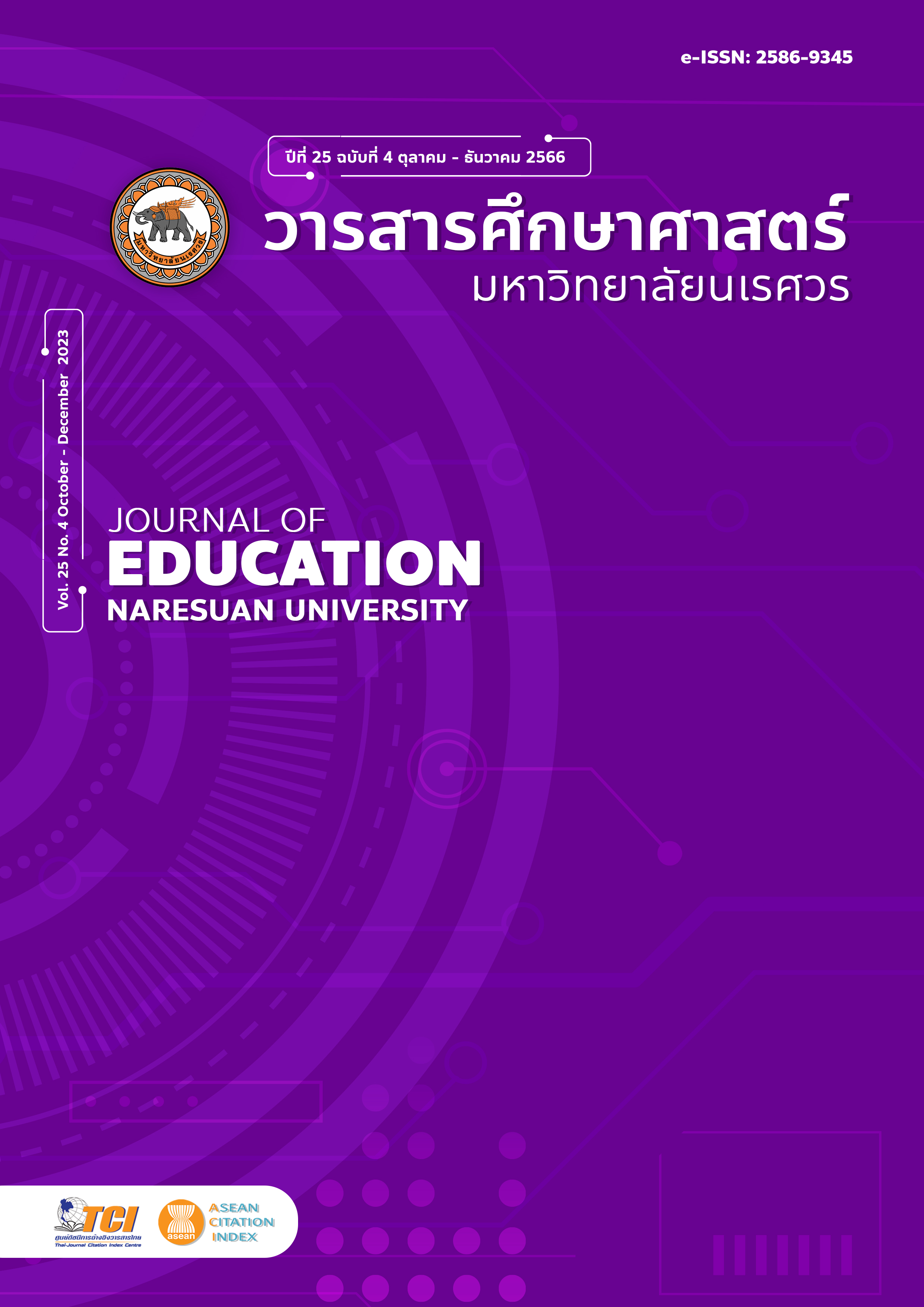THE INCREASING OF BIOGAS QUANTITY AND QUALITY ACTIVITIES BY PARTICIPATORY APPROACH FOR RURAL AREA SCHOOLS
Main Article Content
Abstract
This research objective was to study the results of enlarging the biogas quantity and quality of the participants whose able to concern in the rural area school biogas production. The participants activities were done by adding biogas reactor construction, finding out the biogas raw material and developing the biogas as energy fuel. The problems of conventional biogas were high raw material but lower quantity and lower quality, since there was other gas defiled in the biogas composition. The research focus group was comprised of 9 science teachers, 30 of students and 9 of the involved people in rural area elementary and secondary schools in Nan and Uttaradit province, students and the biogas user in the schools. The research tools employed were a survey of participatory activities, observation form of the experiment on the increasing of biogas quality, in-depth interviews of participants, and questionnaires to ascertain the participants level of satisfaction in the activities. An evaluation of the data formed at the conclusion of this research with the following findings: 1) the most activities was participated by the students with cooperation, developed scientific conception on biogas production and engage actively in the activities, 2) the development biogas production indicated the higher quality and quantity more than those of conventional biogas production, and 3) the participants indicated a high level of satisfaction in their participants activities.
Article Details

This work is licensed under a Creative Commons Attribution-NonCommercial-NoDerivatives 4.0 International License.
The owner of the article does not copy or violate any of its copyright. If any copyright infringement occurs or prosecution, in any case, the Editorial Board is not involved in all the rights to the owner of the article to be performed.
References
Abdel-Galil A., Mostafa M., Elnono M. A., & Mohamed M. F. (2008). Biogas utilization for powering water irrigation pump. Misr. J Ag. Eng., 25(4), 1438-1453.
Auprakul, A., Srilek, N., Lekpool, S. and Somphruek, M. (2020). Increasing efficiency of biogas production from water hyacinth and cattle dung with cassava as an activator. Journal of Tepsatree Academic, 15(2), 125-131.
Buranasingh, N. (2020). Biogas: A product from animal manure to renewable energy. Retrieved from https://www.parliament.go.th/ewtadmin/ewt/parliament_parcy/ewt_dl_link.php?nid=66535&filenam=thai_national_assembly
Eakwilai, S., Jiravarapong, P., Teeraputon, D., & Buosonte, R. (2019). The development of collabolative excursion learning model in community resources by using two-dimentional barcode technology. Journal of Education Naresuan University, 21(4), 301-316. [in Thai]
Gaikwad, V. R., & Katti, P. K. (2014). Design of biogas scrubbing, compression and storage system. Journal of Electrical and Electronics Engineering, 58-63.
Mingchai, C., Nallamothu, R. B., Teferra, A., & Rao, A. (2013). Biogas purification, compression and Bottling. Global Institute for Research and Education, 2(6), 34-38.
Sangyoka, S. (2011). Piloting community yard management, case study: Nai Mueang Subdistrict Municipality, Phichai District, Uttaradit Province. Phitsanulok: Pibulsongkram Rajabhat University. [in Thai]
Shah, D. R., Nagarsheth, H. J., & Acharya, P. (2016). Purification of biogas using chemical scrubbing and application of purified biogas as fuel for automotive engines. Research Journal of Recent Sciences, 5, 1-7.
Singkibut, K., Charusiri, W., & Jiradecha, P. (2011). The Study of Appropriate Technology for Biogas Production from Food Waste Among Universities. ERI Journal, 8(3), 26-32. [in Thai]
Vaivudh, S. (2016). A simple model of biogas production from community waste and gas tank compression. In Academic International Conference on “Understanding the change of localization in the 21th century (ICNSRU 2016)”. Nakhon Sawan, Thailand.
Vaivudh, S. (2017). Biogas engine performance for water pumping in flood and drought protection. Global Journal of Engineering and Technology Review, 2(3), 56-63.


